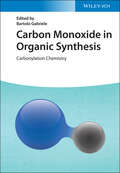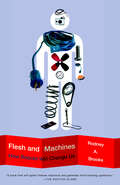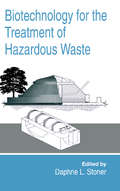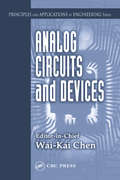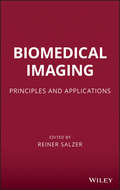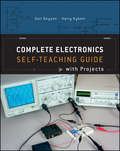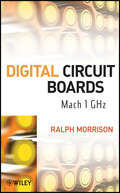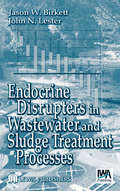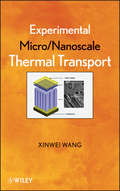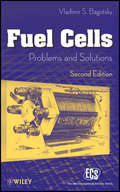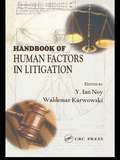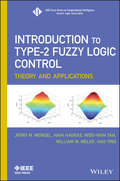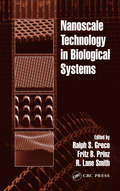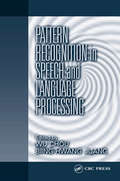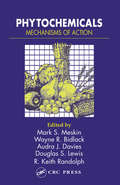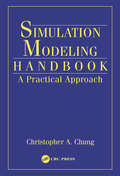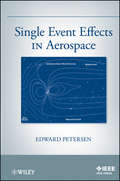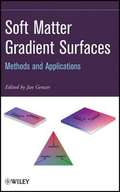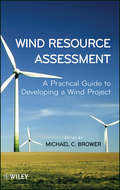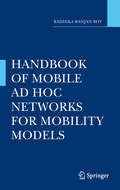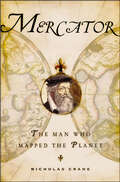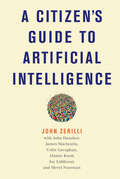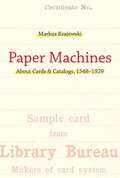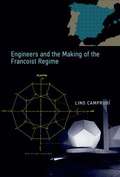- Table View
- List View
Carbon Monoxide in Organic Synthesis: Carbonylation Chemistry
by Bartolo GabrieleA thoroughly up-to-date overview of carbonylation reactions in the presence of carbon monoxide In Carbon Monoxide in Organic Synthesis: Carbonylation Chemistry, expert researcher and chemist Bartolo Gabriele delivers a robust summary of the most central advances in the field of carbonylation reactions in the presence of carbon monoxide. Beginning with a brief introduction on the importance of carbon monoxide as a building block in modern organic synthesis, the author goes on to describe metal-catalyzed carbonylations utilizing iron, cobalt, nickel, copper, and manganese. Descriptions of palladium, ruthenium, and rhodium-catalyzed reactions follow, as do discussions of metal-free carbonylation processes. The book is organized by metal to make the book useful as a guide for researchers from both academia and industry whose work touches on the direct synthesis of carbonyl compounds, carboxylic acid derivatives, and heterocycles. It aims to stimulate further discoveries in this rapidly developing field. Readers will also enjoy: A thorough introduction to carbonylations promoted by first row transition metal catalysts, including cobalt-catalyzed and nickel-catalyzed carbonylations An exploration of carbonylations promoted by second row transition metal catalysts, including ruthenium-, rhodium-, palladium(0)-, and palladium(II)-catalyzed carbonylations Practical discussions of miscellaneous carbonylation reactions, including carbonylations promoted by third row transition metal catalysts and metal-free carbonylation processes Perfect for catalytic and organic chemists, Carbon Monoxide in Organic Synthesis: Carbonylation Chemistry is also an indispensable resource for chemists working with organometallics and industrial chemists seeking a summary of important processes used to synthesize value-added products.
Talking Books: Pioneering and Beyond
by Marilyn Lundell MajeskaAlthough libraries had been finding ways to serve blind patrons as early as the late nineteenth century, the passage of the Pratt-Smoot Act in 1931 was a game-changer. Congress appropriated funds to provide books for blind adults, and the National Library Service for the Blind and Physically Handicapped was established. The five decades after Pratt-Smoot saw many technological developments in recording machines and techniques, some coming hand in hand with innovations in the music industry: from record players, to reel-to-reel tapes, to cassette players. Inevitably, the "talking books" program would always be a compromise between the best possible product and the limitations of what was practical and economically feasible. Author Majeska synthesizes information from interviews and old files to compile a detailed history of talking books from 1932 to 1988--before computers changed the whole scene.
Flesh and Machines: How Robots Will Change Us
by Rodney A. BrooksAre we really on the brink of having robots to mop our floors, do our dishes, mow our lawns, and clean our windows? And are researchers that close to creating robots that can think, feel, repair themselves, and even reproduce? Rodney A. Brooks, director of the MIT Artificial Intelligence Laboratory believes we are. In this lucid and accessible book, Brooks vividly depicts the history of robots and explores the ever-changing relationships between humans and their technological brethren, speculating on the growing role that robots will play in our existence. Knowing the moral battle likely to ensue, he posits a clear philosophical argument as to why we should not fear that change. What results is a fascinating book that offers a deeper understanding of who we are and how we can control what we will become.
Biotechnology for the Treatment of Hazardous Waste
by Daphne L. StonerThe development of biologically based processes for the treatment of hazardous inorganic and organic wastes is a multi-disciplinary effort requiring the consideration of a number of biological, chemical, and physical parameters, as well as the effective teaming of biologists, chemists, engineers, and regulatory agencies. This new text/reference bridges the disciplines in a unique way, allowing an exchange of fundamental information to take place. The book begins with a description of the biological transformations of inorganic and organic compounds and a review of strategies that may be used for the treatment of hazardous wastes. It continues with a discussion of the physiological and engineering factors that must be considered for successful process development and concludes with a discussion of the regulations that have influenced biological waste treatment and environmental remediation.
Analog Circuits and Devices (Principles And Applications In Engineering Ser. #Vol. 6)
by Wai-Kai ChenThe Principles and Application in Engineering Series is a new series of convenient, economical references sharply focused on particular engineering topics and subspecialties. Each volume in this series comprises chapters carefully selected from CRC's bestselling handbooks, logically organized for optimum convenience, and thoughtfully priced to fit
Biomedical Imaging
by Reiner SalzerThis book presents and describes imaging technologies that can be used to study chemical processes and structural interactions in dynamic systems, principally in biomedical systems. The imaging technologies, largely biomedical imaging technologies such as MRT, Fluorescence mapping, raman mapping, nanoESCA, and CARS microscopy, have been selected according to their application range and to the chemical information content of their data. These technologies allow for the analysis and evaluation of delicate biological samples, which must not be disturbed during the profess. Ultimately, this may mean fewer animal lab tests and clinical trials.
Complete Electronics Self-Teaching Guide with Projects
by Earl Boysen Harry KybettAn all-in-one resource on everything electronics-related!For almost 30 years, this book has been a classic text for electronics enthusiasts. Now completely updated for today's technology, this latest version combines concepts, self-tests, and hands-on projects to offer you a completely repackaged and revised resource. This unique self-teaching guide features easy-to-understand explanations that are presented in a user-friendly format to help you learn the essentials you need to work with electronic circuits.All you need is a general understanding of electronics concepts such as Ohm's law and current flow, and an acquaintance with first-year algebra. The question-and-answer format, illustrative experiments, and self-tests at the end of each chapter make it easy for you to learn at your own speed.Boasts a companion website that includes more than twenty full-color, step-by-step projects Shares hands-on practice opportunities and conceptual background information to enhance your learning processTargets electronics enthusiasts who already have a basic knowledge of electronics but are interested in learning more about this fascinating topic on their own Features projects that work with the multimeter, breadboard, function generator, oscilloscope, bandpass filter, transistor amplifier, oscillator, rectifier, and moreYou're sure to get a charge out of the vast coverage included in Complete Electronics Self-Teaching Guide with Projects!
Digital Circuit Boards
by Ralph MorrisonA unique, practical approach to the design of high-speed digital circuit boards<P><P> The demand for ever-faster digital circuit designs is beginning to render the circuit theory used by engineers ineffective. Digital Circuit Boards presents an alternative to the circuit theory approach, emphasizing energy flow rather than just signal interconnection to explain logic circuit behavior.<P> The book shows how treating design in terms of transmission lines will ensure that the logic will function, addressing both storage and movement of electrical energy on these lines. It covers transmission lines in all forms to illustrate how trace geometry defines where the signals can travel, then goes on to examine transmission lines as energy sources, the true nature of decoupling, types of resonances, ground bounce, cross talk, and more.<P> Providing designers with the tools they need to lay out digital circuit boards for fast logic and to get designs working the first time around, Digital Circuit Boards:<P> * Reviews in simple terms the basic physics necessary to understand fast logic design<P> * Debunks the idea that electrical conductors carry power and signals, showing that signal travels in the spaces, not the traces, of circuit boards<P> * Explains logic circuit behavior through real-time analysis involving the fields and waves that carry signal and energy<P> * Provides new information on how ground/power planes work<P> * Outlines a software program for solving energy flow in complex networks<P> Advisory: Bookshare has learned that this book offers only partial accessibility. We have kept it in the collection because it is useful for some of our members. To explore further access options with us, please contact us through the Book Quality link on the right sidebar. Benetech is actively working on projects to improve accessibility issues such as these.
Endocrine Disrupters in Wastewater and Sludge Treatment Processes
by Jason W. Birkett John N. LesterEndocrine Disrupting Chemicals (EDCs) have been shown to produce changes in the endocrine system of organisms, leading to increases in cancers and abnormalities in reproductive structure and function. This book presents research on the endocrine-disrupting effects of sewage and industrial effluents, covering the sources, fate, and transport of EDCs
Experimental Micro/Nanoscale Thermal Transport
by Xinwei WangThis book covers the new technologies on micro/nanoscale thermal characterization developed in the Micro/Nanoscale Thermal Science Laboratory led by Dr. Xinwei Wang. Five new non-contact and non-destructive technologies are introduced: optical heating and electrical sensing technique, transient electro-thermal technique, transient photo-electro-thermal technique, pulsed laser-assisted thermal relaxation technique, and steady-state electro-Raman-thermal technique. These techniques feature significantly improved ease of implementation, super signal-to-noise ratio, and have the capacity of measuring the thermal conductivity/diffusivity of various one-dimensional structures from dielectric, semiconductive, to metallic materials.
Fuel cells
by Vladimir S. BagotskyThe comprehensive, accessible introduction to fuel cells, their applications, and the challenges they pose Fuel cells-electrochemical energy devices that produce electricity and heat-present a significant opportunity for cleaner, easier, and more practical energy. However, the excitement over fuel cells within the research community has led to such rapid innovation and development that it can be difficult for those not intimately familiar with the science involved to figure out exactly how this new technology can be used. Fuel Cells: Problems and Solutions, Second Edition addresses this issue head on, presenting the most important information about these remarkable power sources in an easy-to-understand way. Comprising four important sections, the book explores: The fundamentals of fuel cells, how they work, their history, and much more The major types of fuel cells, including proton exchange membrane fuel cells (PEMFC), direct liquid fuel cells (DLFC), and many others The scientific and engineering problems related to fuel cell technology The commercialization of fuel cells, including a look at their uses around the world Now in its second edition, this book features fully revised coverage of the modeling of fuel cells and small fuel cells for portable devices, and all-new chapters on the structural and wetting properties of fuel cell components, experimental methods for fuel cell stacks, and nonconventional design principles for fuel cells, bringing the content fully up to date. Designed for advanced undergraduate and graduate students in engineering and chemistry programs, as well as professionals working in related fields, Fuel Cells is a compact and accessible introduction to the exciting world of fuel cells and why they matter.
Handbook of Human Factors in Litigation
by Y. Ian Noy Waldemar KarwowskiUsing ergonomics in forensics can help prevent the recurrence of system failures through engineering or administrative controls. It can also raise the level of concern among professionals and the public regarding product, workplace, and service safety due to perceived exposure to liability. Even with such a potentially important and broad impact, f
Introduction To Type-2 Fuzzy Logic Control
by Hao Ying Jerry Mendel William W. Melek Hani Hagras Woei-Wan TanWritten by world-class leaders in type-2 fuzzy logic control, this book offers a self-contained reference for both researchers and students. The coverage provides both background and an extensive literature survey on fuzzy logic and related type-2 fuzzy control. It also includes research questions, experiment and simulation results, and downloadable computer programs on an associated website. This key resource will prove useful to students and engineers wanting to learn type-2 fuzzy control theory and its applications.
Nanoscale Technology in Biological Systems
by Ralph S. Greco Fritz B. Prinz R. Lane SmithNanoscale Technology in Biological Systems reviews recent accomplishments in the field of nanobiology and introduces the application of nanoscale matrices to human biology. It focuses on the applications of nanotechnology fabrication to biomedical devices and discusses new physical methods for cell isolation and manipulation and intracellular commu
Pattern Recognition in Speech and Language Processing (Electrical Engineering And Applied Signal Processing Ser.)
by Wu Chou Biing Hwang JuangOver the last 20 years, approaches to designing speech and language processing algorithms have moved from methods based on linguistics and speech science to data-driven pattern recognition techniques. These techniques have been the focus of intense, fast-moving research and have contributed to significant advances in this field.Pattern Reco
Phytochemicals: Mechanisms of Action
by Mark S. Meskin Wayne R. Bidlack Audra J. Davies Douglas S. Lewis R. Keith RandolphPhytochemicals: Mechanisms of Action is the latest volume in a highly regarded series that addresses the roles of phytochemicals in disease prevention and health promotion. The text, an ideal tool for scientists and researchers in the fields of functional foods and nutraceuticals, links diets rich in plant-derived compounds, such as fruit, vegetabl
Simulation Modeling Handbook: A Practical Approach
by Christopher A. ChungThe use of simulation modeling and analysis is becoming increasingly more popular as a technique for improving or investigating process performance. This book is a practical, easy-to-follow reference that offers up-to-date information and step-by-step procedures for conducting simulation studies. It provides sample simulation project support materi
Single Event Effects in Aerospace
by Edward PetersenThis book introduces the basic concepts necessary to understand Single Event phenomena which could cause random performance errors and catastrophic failures to electronics devices. As miniaturization of electronics components advances, electronics components are more susceptible in the radiation environment. The book includes a discussion of the radiation environments in space and in the atmosphere, radiation rate prediction depending on the orbit to allow electronics engineers to design and select radiation tolerant components and systems, and single event prediction.
Soft matter gradient surfaces
by Jan GenzerA comprehensive look at the latest advances in soft material gradients Tremendous progress has been made in the field of surface-bound soft material gradients in recent years, with intriguing new areas of investigation opening up and advances in bioanalytics changing the way high-throughput screening methods are used in the design and discovery of catalysts and new materials. This volume provides the first complete, up-to-date summary of the progress in this field, showing readers how to harness the powerful properties of soft matter gradients in the design and development of modern functional materials. Contributed chapters from experts in diverse fields help bridge areas of materials science, chemistry, and biomaterials, covering fabrication techniques, gradients in self-assembled monolayers, polymer gradients, dynamic gradient structures, structure and assembly, mechanical properties, sensors, biomaterial applications, protein adsorption, and organization of cells on gradient surfaces. Readers will learn how to implement the techniques described in the book in their own work, while improving efficacy and lowering research and production costs. Soft Matter Gradient Surfaces is an invaluable resource for chemists, physicists, biologists, and engineers, and anyone who would like to take advantage of these unique soft matter building blocks.
Wind Resource Assessment
by Michael BrowerA practical, authoritative guide to the assessment of wind resources for utility-scale wind projects-authored by a team of experts from a leading renewable energy consultancyThe successful development of wind energy projects depends on an accurate assessment of where, how often, and how strongly the wind blows. A mistake in this stage of evaluation can cause severe financial losses and missed opportunities for developers, lenders, and investors.Wind Resource Assessment: A Practical Guide to Developing a Wind Project shows readers how to achieve a high standard of resource assessment, reduce the uncertainty associated with long-term energy performance, and maximize the value of their project assets. Beginning with the siting, installation, and operation of a high-quality wind monitoring program, this book continues with methods of data quality control and validation, extrapolating measurements from anemometer height to turbine height, adjusting short-term observations for historical climate conditions, and wind flow modeling to account for terrain and surface conditions.In addition, Wind Resource Assessment addresses special topics such as: Worker safety Data security Remote sensing technology (sodar and lidar) Offshore resource assessment Impacts of climate change Uncertainty estimation Plant design and energy production estimatioFilled with important information ranging from basic fundamentals of wind to cutting-edge research topics, and accompanied by helpful references and discussion questions, this comprehensive text-designed for an international audience-is a vital reference that promotes consistent standards for wind assessment across the industry.
Handbook of Mobile Ad Hoc Networks for Mobility Models
by Radhika Ranjan RoyThe Mobile Ad Hoc Network (MANET) has emerged as the next frontier for wireless communications networking in both the military and commercial arena. Handbook of Mobile Ad Hoc Networks for Mobility Models introduces 40 different major mobility models along with numerous associate mobility models to be used in a variety of MANET networking environments in the ground, air, space, and/or under water mobile vehicles and/or handheld devices. These vehicles include cars, armors, ships, under-sea vehicles, manned and unmanned airborne vehicles, spacecrafts and more. This handbook also describes how each mobility pattern affects the MANET performance from physical to application layer; such as throughput capacity, delay, jitter, packet loss and packet delivery ratio, longevity of route, route overhead, reliability, and survivability. Case studies, examples, and exercises are provided throughout the book. Handbook of Mobile Ad Hoc Networks for Mobility Models is for advanced-level students and researchers concentrating on electrical engineering and computer science within wireless technology. Industry professionals working in the areas of mobile ad hoc networks, communications engineering, military establishments engaged in communications engineering, equipment manufacturers who are designing radios, mobile wireless routers, wireless local area networks, and mobile ad hoc network equipment will find this book useful as well.
Mercator: The Man Who Mapped the Planet
by Nicholas CraneAn enthralling biography of the man who created the first real map of the world and changed civilizationBorn at the dawn of the age of discovery, Gerhard Mercator lived in an era of formidable intellectual and scientific advances. At the center of these developments were the cartographers who painstakingly pieced together the evidence to create ever more accurate pictures of the planet. Mercator was the greatest of all of them-a poor farm boy who attended one of Europe's top universities, was persecuted and imprisoned by the Inquisition, but survived to coin the term "atlas" and to produce the so-called projection for which he is known. Devoutly religious, yet gripped by Aristotelian science, Mercator struggled to reconcile the two, a conflict mirrored by the growing clash in Europe between humanism and the Church.Mercator solved the dimensional riddle that had vexed cosmographers for so long: How could the three-dimensional globe be converted into a two-dimensional map while retaining true compass bearings? The projection revolutionized navigation and has become the most common worldview.Nicholas Crane-a fellow geographer-has combined a keen eye for historical detail with a gift for vivid storytelling to produce a masterful biography of the man who mapped the planet.
A Citizen's Guide to Artificial Intelligence
by John ZerilliA concise but informative overview of AI ethics and policy.Artificial intelligence, or AI for short, has generated a staggering amount of hype in the past several years. Is it the game-changer it's been cracked up to be? If so, how is it changing the game? How is it likely to affect us as customers, tenants, aspiring home-owners, students, educators, patients, clients, prison inmates, members of ethnic and sexual minorities, voters in liberal democracies? This book offers a concise overview of moral, political, legal and economic implications of AI. It covers the basics of AI's latest permutation, machine learning, and considers issues including transparency, bias, liability, privacy, and regulation.
Paper Machines: About Cards and Catalogs, 1548-1929
by Markus Krajewski Peter KrappToday on almost every desk in every office sits a computer. Eighty years ago, desktops were equipped with a nonelectronic data processing machine: a card file. In Paper Machines, Markus Krajewski traces the evolution of this proto-computer of rearrangeable parts (file cards) that became ubiquitous in offices between the world wars. The story begins with Konrad Gessner, a sixteenth-century Swiss polymath who described a new method of processing data: to cut up a sheet of handwritten notes into slips of paper, with one fact or topic per slip, and arrange as desired. In the late eighteenth century, the card catalog became the librarian's answer to the threat of information overload. Then, at the turn of the twentieth century, business adopted the technology of the card catalog as a bookkeeping tool. Krajewski explores this conceptual development and casts the card file as a "universal paper machine" that accomplishes the basic operations of Turing's universal discrete machine: storing, processing, and transferring data. In telling his story, Krajewski takes the reader on a number of illuminating detours, telling us, for example, that the card catalog and the numbered street address emerged at the same time in the same city (Vienna), and that Harvard University's home-grown cataloging system grew out of a librarian's laziness; and that Melvil Dewey (originator of the Dewey Decimal System) helped bring about the technology transfer of card files to business.
Engineers and the Making of the Francoist Regime
by Lino CamprubíIn this book, Lino Camprubí argues that science and technology were at the very center of the building of Franco's Spain. Previous histories of early Francoist science and technology have described scientists and engineers as working "under" Francoism, subject to censorship and bound by politically mandated research agendas. Camprubí offers a different perspective, considering instead scientists' and engineers' active roles in producing those political mandates. Many scientists and engineers had been exiled, imprisoned, or executed by the regime. Camprubí argues that those who remained made concrete the mission of "redemption" that Franco had invented for himself. This gave them the opportunity to become key actors -- and mid-level decision makers -- within the regime. Camprubí describes a series of projects across Spain undertaken by the civil engineers and agricultural scientists who placed themselves at the center of their country's forced modernization. These include a coal silo, built in 1953, viewed as an embodiment of Spain's industrialized landscape; links between laboratories, architects, and the national Catholic church (and between technology and authoritarian control); vertically organized rice production and research on genetics; river management and the contested meanings of self-sufficiency; and the circulation of construction standards by mobile laboratories as an engine for European integration. Separately, each chapter offers a fascinating microhistory that illustrates the coevolution of Francoist science, technology, and politics. Taken together, they reveal networks of people, institutions, knowledge, artifacts, and technological systems woven together to form a new state.
